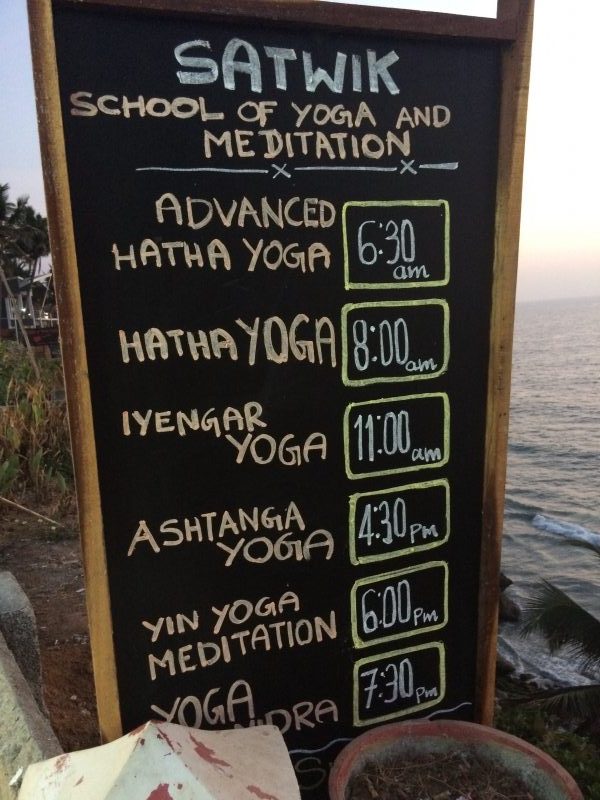Once you have a solid grasp on what Yoga is really all about, how do you decide which of the many classes is best for you or your clients? Although there have been all sorts of new classes springing up with yoga’s growing popularity in Western culture, the two Asanas that have the deepest roots and the most influence over all the others are Hatha and Ashtanga Vinyasa. What are these two styles all about and how can they benefit your clients?
Hatha Yoga
Hatha is the original source of the physical practice. It is considered the mother of all prevailing asana practices known today. All asana styles have been created from the 84 classical hatha asanas. Ha is the Sanskrit term for sun and tha means moon. Within the name itself, opposites are unified, which exemplifies Hatha’s root purpose.
Hatha Yoga is meant to bring balance between the inherent opposite energies that exist within us: masculine and feminine, hot and cold, rationality and intuition. Hatha yoga strives to regain internal balance and to bring unity to the physical and energetic bodies by reconditioning these tendencies.
Generally speaking, a Hatha class will be slower paced and occasionally incorporate meditation and pranayama practices. A participant can expect to maintain asanas for longer periods and experience deep stretches. Usually, students take a resting posture between each asana to “reset” before the next. However, there are classes that are more dynamic than a traditional Hatha class by blending it with Vinyasa (explained below).
Hatha is a wonderful style for a beginner who is wanting to find stress relief, improve overall body flexibility and take their time during the practice, but seasoned yogis gain benefits as well.
Ashtanga Vinyasa
This system of yoga can be traced back to the ancient text Yoga Korunta, which was purportedly discovered in the late 1920’s by the master Sri T. Krishnamacharya, who orally passed them on to his disciple K. Pattabhi Jois. It is Pattabhi Jois who is considered the father of Ashtanga Vinyasa.
Ashtanga Vinyasa is a rigorous and powerful style and follows a particular sequence of Asanas. Vinyasa translated is “move in a special way”. Each Asana of the sequence has a specific Dhristi, or gaze of the eyes, and each transition between Asanas is accompanied either by an inhalation or exhalation.
The intention of Ashtanga Vinyasa is to learn how to maintain an internal focus throughout the practice, improving mental strength and a stronger connection of mind and body.
This is a demanding and heat building Asana practice. It is for the participant who appreciates a structured and vigorous practice, and who desires a powerful challenge that will strengthen the body and improve flexibility.
What’s New in Yoga Styles?
The Yoga industry has been rapidly growing over the last two decades. This growth has brought forth many new styles of Asana practice. There are too many to go into great detail, but a brief overview of some of the more popular styles is called for.
Hot Yoga
As the name implies, these types of classes are done in a heated room and last 60-90 minutes. A participant can generally expect the room to be heated to 92 degrees Fahrenheit. These classes will be quite challenging and can create a strong detox response in the body. It is not recommended for those with heart conditions.
Power Yoga
This is another style of yoga for a participant looking to be pushed and challenged. It can be compared to Ashtanga in its intensity and rigorousness. It has a greater fitness and exercise component than most other styles of asana practice. This is a wonderful alternative for those clients who cannot lift weights or do a high-impact workout.
Vinyasa
This is a broad area in the asana department. As mentioned earlier, Vinyasa means “to move in a special way”. A Vinyasa practice generally involves a dynamic and flowing class. There can be 3-4 mini-sequences within the class that are repeated, and the connection of breath and asana transition emphasized, an aspect inspired by Ashtanga Vinyasa. A Vinyasa class can be offered from beginner to advanced levels. It’s a great style of yoga for those who find the slower-paced classes uninspiring.
Is Yoga for Everyone?
Yoga is my first and foremost passion, so I may be somewhat biased in my claim of its greatness. Yet, considering how long it has been around, and how many different cultures have utilized and adapted it, it’s fair to say it has its place in the world of wellness.
I wanted to create some clarity on this enchanting practice’s roots, since understanding where something has come from offers a clearer perspective of where it is now. With so many different options today and a style of Asana for almost every level of fitness or interest, I believe the practice of Asana can be helpful for everyone. Whether the goal is to improve flexibility, gain strength, create stillness in a busy lifestyle or supplement a mental health routine, Asana practice can transform lives.
As fitness professionals, we don’t have to be master yogi’s to incorporate asanas into a personal training session. Understanding your clients’ needs and interests, plus the yoga essentials and different styles, will enable a trainer to both direct a client to a class that might benefit them or to find ways to incorporate asanas into fitness programming, such as in a dynamic warm-up or a post-run cool down.



